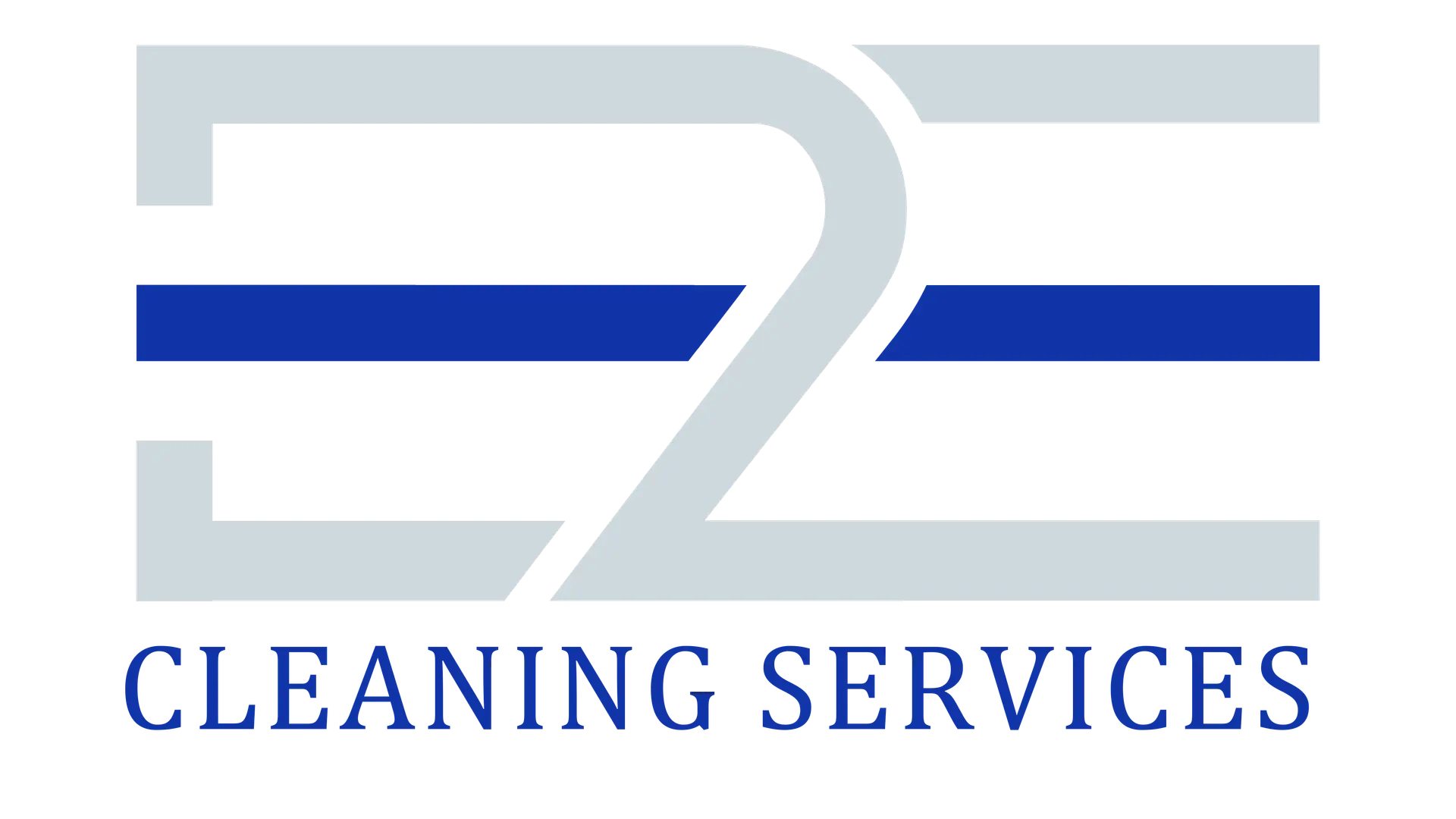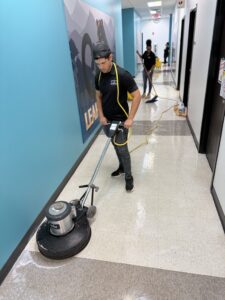Effective construction site cleaning is an essential part of project management which directly affects budget, timelines, and the whole success of the project. In this comprehensive guide, we explore how strategic planning, time saving best practices, cost reduction strategies, safety protocols, and technological innovations can help construction professionals achieve the best cleaning processes.
Implementing the actionable tips and solutions that this article provides will help construction companies get measurable results, from the labor costs being decreased, to working faster, better serve the clients, and keep a competitive ground.
Strategic Planning for Construction Cleanup
An effective construction site cleaning strategy is based on proper planning. A solid plan design can be integrated in a way to simplify the processes, minimize disruptions and comply with the safety and the environmental regulations.
Pre-Construction Cleaning Planning
A thorough cleaning plan should be developed before the project starts, to be used with the different project phases. For this plan, there should also be resource allocation, scheduling, and a predefined duties delegation. Rather than passively dealing with debris accumulation, and creating a messy, disarrayed project site, construction teams can proactively eliminate the risk of debris and maintain a clean, clear project site throughout the life of the project.
Integration with Project Phases
Cleaning a construction site should not be an afterthought, but rather should be part of the project timeline. If cleaning tasks become part of each stage of the construction process, the clean environment can be held constant throughout and post construction cleaning requirements can be minimized. This approach saves both time and money, decreases slip, trip, and fall hazards, and increases worker safety and productivity.
Resource Allocation and Scheduling
A streamlining of construction site cleaning requires effective resource allocation and scheduling. Designate a cleaning crew or being a team member cleaning and assignments. Establish regular cleaning sessions and honor them with milestones from each project to maintain the process of cleaning without the hassle of gathering debris.
Cleaning tasks can be schedule into project schedules so that resources are available when needed and reduce disruption to the overall project schedule.
Waste Management Strategies
Construction site cleaning is not complete without a comprehensive waste management plan. The procedures for the segregation, the storage, the disposal and the recycling of different waste materials, should be spelled out in this plan.
Efficient waste management strategies practiced by construction companies would help slash disposal cost, decrease environmental impact and conformity with local regulations.
Time-Saving Best Practices
In the construction industry time is a valuable commodity and reducing clean up times through use of effective cleaning practices can significantly reduce project time while maintaining outstanding levels of cleanliness.
Daily Cleanup Protocols
Daily cleanup protocols are an easy and surefire way to keep the construction site clean and organized. Dust and debris removal, surface cleaning and floor maintenance should be among these protocols.
Setting a routine of daily cleaning will help construction teams avoid dirt and debris from stacking up, which saves the team from having to do extensive post construction cleaning, and allows the employees to work in a safer environment.
Equipment and Tool Organization
For effective cleaning process, equipment and tools are arranged in the proper way. Assign areas for storage and keeping of cleaning equipment and tools and ensure that the tools need when required have easy access.
Doing this practice saves time and also helps to keep the equipment in good condition, so that they don’t need to be replaced frequently.
Efficient Debris Removal Systems
Efficient debris removal systems can be a big investment for reducing the time and effort needed to clean up a construction site. Clean the area through its entirety using brooms, vacuums, and dusting tool dedicated to construction areas. With these specialized tools dust, debris and more will be able to be effectively removed for a clean and safe working environment.
Progressive Cleaning Techniques
Progressive techniques can further streamline the operation in cleaning. Begin by cleaning from top to bottom, so that dust and debris doesn’t fall on already cleaned surfaces. Also, use dry cleaning methods prior to wet cleaning in order to avoid dust and debris spread. Following these techniques will help construction teams to achieve maximum efficiency and minimum rework.
See our Post Construction Cleaning Solutions. Click Here
Cost-Reduction Strategies
Cleaning a construction site is a considerable expense, but companies can reduce overhead and get the most out of their investment through cost reduction strategies.
In-House vs. Contracted Cleaning Services
Construction companies must determine whether it is more cost effective to have an in house cleaning crew or to hire a professional cleaning service. If you find yourself doing large scale projects or having unknown waste type, then contracting cleaning services is the way to go as it is most efficient and cost effective.
But for smaller projects or for routine cleaning tasks, an in house crew may be more economical. Do a complete cost benefit analysis to see what will work best for each project.
Optimal Cleaning Equipment Selection
It is important to choose the right cleaning equipment for cost effective operation. Buy cleaning equipment which is long lasting and suited for the type of flooring you have and the surfaces you are cleaning.
Though the initial outlay may be more, high performance equipment will save money over time by reducing labor costs and reducing the number of times the equipment needs replacing.
Material Recycling Opportunities
Material recycling strategies implemented can greatly reduce waste disposal costs and avoid environmental impact. Find ways to recycle wood, metal, concrete, and plastics. Engage with your local recycling facility or organizations to foster effective recycling practices and examine income generating prospects from recycling of recyclable material.
Labor Optimization Techniques
Reducing cleaning costs is dependent on optimizing labor resources. Give a clear set of tasks divided between other people on your team based on their skills and experience; keep track of their progress to see if things are being maximized. You might also want to consider incentive programs or performance based compensation that will help to stimulate productivity and workers. Furthermore, you should provide training and education to increase efficiency and reduce rework by doing this.
Safety First Cleaning Protocols
It’s not just aesthetics; construction site cleaning is also about worker safety and regulatory compliance. Safety first cleaning protocols can be implemented to reduce risk, and avoid fines and penalties.
Dust Control Measures
Dust control measures, to prevent airborne dust particles from reaching the occupants of construction, unfortunately, is a top priority. Use HEPA (High Efficiency Particulate Air) filters and water based cleaning solutions to cut down of dust spreading while cleaning. It is also important to ensure enough ventilation and air filtering systems to keep your indoor air quality, healthy.
Hazardous Material Handling
There are often plenty of hazardous materials used on construction sites: chemicals, paints, solvents, to name a few. Worker watching proper handling and disposal of these materials is essential for safety because of the worker and the environment.
Rigorous training of train workers on the safe handling of hazardous material and the use of appropriate personal protection equipment (PPE) in order to work with these materials should be ensured.
PPE Requirements
Construction site safety is incomplete without personal protective equipment (PPE). All workers should wear PPE during cleaning tasks: hard hat, safety glasses, gloves and protective clothing. Regularly inspections must be conducted to make sure that PPE in good condition and to make sure it is used in proper manner.
OSHA Compliance Guidelines
The Occupational Safety and Health Administration (OSHA) has rule set guidelines and regulations for the construction site safety and waste management. Be familiar with these guidelines and see that your cleaning processes are about these guidelines. Not following OSHA regulations can put you in hot water with big fines and penalties as well as getting sued.
Technology and Innovation
The construction industry is always changing and adopting new technologies and innovations can greatly improve cleaning processes, increase efficiency and save costs.
Modern Cleaning Equipment
Buy high powered vacuums, power washers and specialized floor cleaning machines. The advanced tools used will allowed us to greatly cut down the time and effort necessary to clean and create even better results. Also, equipment with eco friendly features like low water consumption and energy efficiency will help you reduce your environmental impact.
Automated Solutions
Explore automated cleaning solution options including robotic vacuum and floor scrubbers. These new technologies can do repetitive tasks that would otherwise take up human resources to do more complex cleaning tasks. They can function around the clock and let you boost productivity and cut down on labor costs.
Digital Tracking Systems
Digitally track cleaning progress and hold people accountable with systems. These systems allow for real time updates indicating when a task was completed, identify what should be given more attention and produce a complete report to analyze and keep improving.
Sustainable Cleaning Methods
Use sustainable cleaning methods in your processes to lower your environmental impact and support a more eco friendly construction industry. Use environmental friendly cleaning solutions, conserve water, maintain the chance of recycling and waste reduction. In addition to being good for the environment, these practices can help your company’s reputation and attract environmentally conscious clients.
ROI and Long-Term Benefits
Effective construction site cleaning strategies can be a very worthwhile investment with a strong return on investment (ROI).
Client Satisfaction Impact
A clean and well maintained construction site can go a long way to make clients happy. Approaching clients professionally and taking care of the details often earn you positive reviews, another sale or two, or referral business. A clean site indicates a company who takes pride in the craftsmanship of their products and promotes trust and confidence in your company.
Project Handover Efficiency
Cleaning during and after construction can make the project handover process run more smoothly. Through making sure the site is clean and fit for occupancy before hand, you will need less cleaning services, which saves time and cost for your company and the client.
Maintenance Cost Reduction
All of construction equipment materials and tools could extend lifespan when properly cleaned and maintained. Removing debris, dust and other contaminants can reduce wear and tear, minimize the risk of damage and ultimately reduce maintenance and replacement costs.
Reputation Management
Professional cleaning services and a clean company commitment can help your construction company reputation. Who doesn’t want friends in the industry? Establishing a good reputation in the industry can help you leverage a competitive advantage; new clients being attracted and even more lucrative projects being secured. Furthermore, an employee’s clean and safe work environment can increase morale, retention, and ultimately benefit your company.
Payoff
Effective construction cleaning strategies must be implemented to accomplish optimum project timelines, cost effectiveness and a safe and compliant work environment. With this comprehensive guide, construction professionals can follow actionable tips and solutions that will lead to measurable results, and give you an edge over your competitors.
Reduced labor costs, improved efficiency, enhanced client satisfaction and increased project handover efficiency are key performance indicators to monitor the success of your cleaning efforts.
To achieve immediate improvement, consider taking the following action steps:
- Create a complete cleaning plan that links with project phases and efficiently wastes methods.
- Put an in place daily cleanup protocol and efficient debris removal system so site order can be maintained and no accumulation occurs.
- Determine if in house cleaning crews or contracted cleaning services are the most cost effective for your project needs.
- Invest in modern cleaning equipment and look into automation to optimize a cleaning company’s productivity and drive down labor costs, as well.
- Set safety top priority by means of installation of dust control measures, appropriate how to handle hazardous materials, and following OSHA guidelines.
- Sustainable cleaning methods should be embraced, and material recycling opportunities considered in order to minimise environmental impact.
- Analyze and monitor cleaning progress with the use of digital tracking systems to find opportunities to improve.
Taking a proactive, strategic approach to construction site housekeeping can save you time and money and help to establish your reputation for professionalism, quality and environmental awareness.






